Samsung Galaxy S6 vs. S5: What's New
The Galaxy S6 devices are more powerful and feature-rich than their predecessor, but lose some valuable storage options.
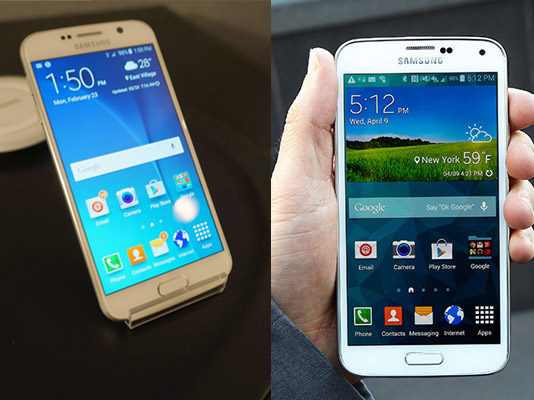
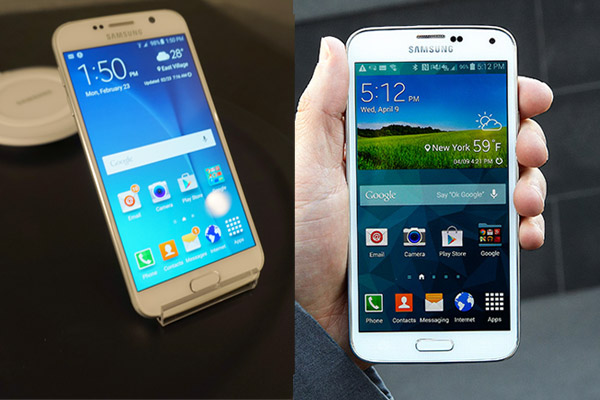
Samsung unveiled the new Galaxy S6 at Mobile World Congress today (March 1) in Barcelona, Spain. While we won’t know exactly how it will fare on our benchmarks, we do know what to expect from the new phone's specs and features. Generally speaking, the Galaxy S6 is more powerful and feature-rich than their predecessor. This functionality comes at a price, however, in terms of battery life and customizability. So, just how out of date is your Galaxy S5, and should you sell it now?
| Samsung Galaxy S5 | Samsung Galaxy S6 | |
| CPU | 2.5 GHz quad-core processor | Octa-core processor: 2.1 GHz quad-core and 1.5 GHz quad-core |
| RAM | 2 GB | 3 GB |
| Storage | 16 / 32 GB; expandable via microSD | 32 / 64 / 128 GB; not expandable |
| Dimensions | 5.6 x 2.9 x 0.3 inches | 5.6 x 2.8 x 0.3 inches |
| Weight | 5.1 oz | 4.9 oz |
| Battery Capacity | 2,800 mAh | 2,550 mAh |
| Screen Size | 5.1 inches | 5.1 inches |
| Screen Resolution | 1920 x 1080 | 2560 x 1440 |
| Default OS | Android 4.4.2 Kitkat | Android 5.0 Lollipop |
| Ports and Slots | USB 2.0, microSD | USB 2.0 |
| Front Camera / Rear Camera | 2 MP / 16 MP | 5 MP / 16 MP |
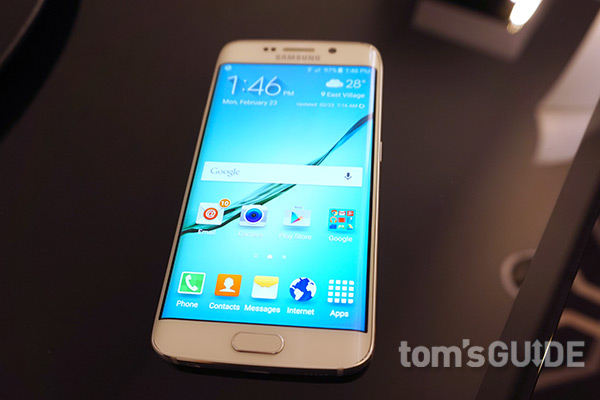
Tech Specs
Samsung wants to make the Galaxy S6 line even more powerful than the previous generation. The Galaxy S5 came with a 2.5-GHz quad-core processor, 2GB RAM, either 32 or 64GB storage, and Android 4.4.2 KitKat built-in.
The Galaxy S6, by contrast, sports two processors: one quad-core 2.1-GHz and one quad-core 1.5-GHz. In theory, this will allow it to handle more applications with greater precision. It will also offer 3GB RAM and storage options of 32, 64, or 128GB and come with Android 5.0 Lollipop ready to go. (Galaxy S5 owners will also receive Lollipop as a software update.)
These increased capabilities come at a price. Although octa-core processing allows more granular app control, the lower speed could be troublesome for graphically intensive apps, such as console game ports. Furthermore, the Galaxy S6 lacks a microSD slot, meaning that you’ll have to pay up-front for expensive onboard storage, and whatever you buy, you’re stuck with. The Galaxy S5 doesn't have that restriction.
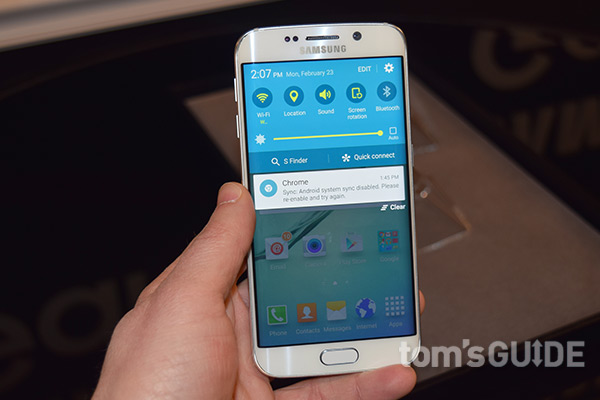
Size and Screen
At 5.6 x 2.9 x 0.3 inches, the Galaxy S5 skewed to the larger end of the smartphone scale. The Galaxy S6 is a little smaller — but not so much that anyone would notice. The S6 measures 5.6 x 2.8 x 0.3 inches.
The screen is arguably where the Galaxy S6 gets its biggest upgrade. The Galaxy S5’s screen is 5.1 inches and offered full 1920 x 1080-oixel resolution, for a pixel density of 432 ppi. The Galaxy S6 goes beyond the standard HD at 2560 x 1440-pixel resolution on a 5.1-inch screen, giving it a pixel density of 577 ppi. Both S5 and S6 use a Super AMOLED screen.
Get instant access to breaking news, the hottest reviews, great deals and helpful tips.
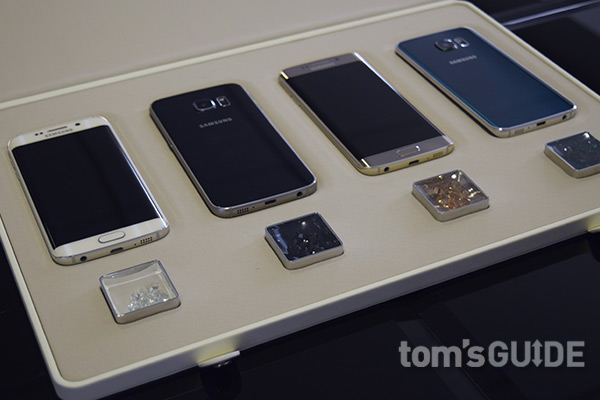
Battery Power
Until we run tests, it will be impossible to tell how the Galaxy S6’s battery compares to that of the S5. However, it’s worth pointing out that the S6 actually has a diminished battery capacity compared to its bigger brother. The Galaxy S5 offered 2,800mAh of capacity, while the S6 weighs in and 2,550mAh.
It’s worth pointing out that a smaller battery capacity does not necessarily mean reduced battery life; the primary determinant in how long a phone’s charge last is how much power it draws, not how big the battery is. Still, it’s entirely possible that you’ll have to charge your S6 a little more often than you’re used to if you currently own an S5.

Camera
Selfie enthusiasts, take heed: The Galaxy S6 was made with you in mind. The Galaxy S5 and S6 both feature 16-megapixel rear cameras, but the S6 offers a 5-MP front camera. Compare that to the 2-MP front-facing camera on the S5, and it’s easy to see how the S6 could be a boon for self-photos and video calls.
Aside from that, the Galaxy S6 has a bevy of camera software improvements that could help it take much better pictures than its predecessor. The S5 offered high dynamic range functionality, selective focus and “virtual tour shot,” which allowed users to take a 360-degree photo of their surroundings.
The Galaxy S6 includes more refined versions of all of these features, plus quick launch, low light video, improved zoom, automatic white balancing, slow- and fast-motion options and a pro mode for users who want very granular control over their photos. We will investigate the S6’s photo capabilities in a separate article, but it sounds like the phone will give users an unprecedented level of control.
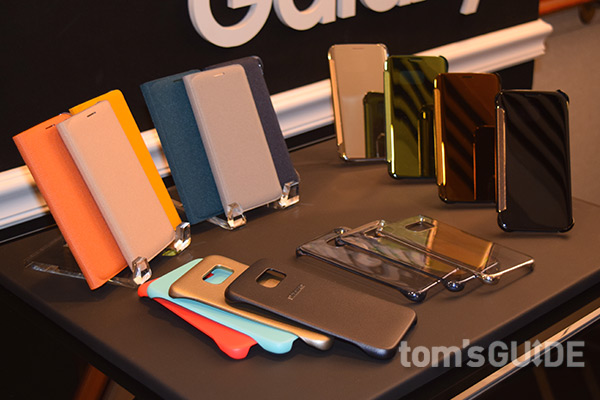
Services
Last time around, Samsung highlighted how many Google services the S5 had access to (just about all of them). The S6 will retain its Google functionality, and add a number of Samsung-specific features, including S Health 4.0 and Samsung Pay. The former will help keep users fit, while the latter will let them pay in-person for goods and services wirelessly via NFC.
What’s the same?
Beyond the features described above, the Galaxy S5 and S6 have very similar feature sets. Both offer 4G LTE service, a wide variety of video and audio codecs, and a slew of sensors, including an accelerometer, gyroscope, compass, barometer, fingerprint reader and heart rate monitor. If you could watch it or measure it on the S5, chances are you’ll be able to do it on the S6, too.
Overall, the Galaxy S6 appears to be incrementally better in terms of hardware. The real trick will be to measure their performance in a full review and see how they measure up.
- HTC One M9 Hands-On
- Samsung Seals Out Galaxy S6 Users
- Samsung Pay Makes Galaxy S6 a Better Mobile Wallet
Marshall Honorof is a Staff Writer for Tom's Guide. Contact him at mhonorof@tomsguide.com. Follow him @marshallhonorof. Follow us @tomsguide, on Facebook and on Google+.zz

Marshall Honorof was a senior editor for Tom's Guide, overseeing the site's coverage of gaming hardware and software. He comes from a science writing background, having studied paleomammalogy, biological anthropology, and the history of science and technology. After hours, you can find him practicing taekwondo or doing deep dives on classic sci-fi.
-
anon_person My understanding is that the S6 Battery is not removable. So if it dies so goes the phone, and battery life is limited, whereas with S5 you can carry spares.Reply -
drapacioli No removable battery, a reduced battery capacity, and no expandable storage, no sale...Way to take three steps back Samsung, I'm not buying this shit and I've bought Galaxy phones since they were first introduced.Reply -
David1979 Seriously people like to complain all the time.. what if it's integrated battery? Apple has been doing it and they sell and I'm sure when the time is right and you'll need to replace the s6 battery (3-5+ years) they'll be cheap replacement solutions. Samsung is a step ahead now with the s6.Reply
Admin's note: Edited for language -
drapacioli ReplySeriously people like to complain all the time.. what if it's integrated battery? Apple has been doing it and they sell and I'm sure when the time is right and you'll need to replace the s6 battery (3-5+ years) they'll be cheap replacement solutions. Samsung is a step ahead now with the s6.
The battery does NOT last 3 to 5 years, they barely last two. The smartphone batteries have a typical cycle count of 500 or so before it has serious charging issues, and since you have to charge it every day (sometimes multiple times per day), it's very easy to reach a point where the battery will no longer charge well before a typical 2 year agreement is up. Then if you're outside the US and get the phone on full retail, you're out of luck even more because you won't get a good value. People buy the iPhone because it's Apple and are willing to give up function for better form, but I am not one of those people. Add to that the reduced capacity of the battery on this phone and it's just not going to last long enough. You pay the price in "premium" design that way, much like apples iPhone or mac book line. The bottom line is when the battery is not user replaceable the only way to get one is to pay MORE money for a someone else to do it, compared with a simple battery swap it will never be "cheap"
Also if you're like me and have a 64gb microsd card for expandability, you certainly don't want to be paying a $100-$200 premium to make up for that lack of expandability just because Samsung decided it's not important to their customers anymore. It's a kick in the teeth after making such an investment. -
osalt2 For many the deal-breaker is : No SD Slot & No removal battery. Many Samsing buffs will just upgrade to an S5 or look at HTC!Reply -
Marshall Honorof Just wanted to add: As far as I know, the battery is, indeed, not removable. Both removable batteries and expandable memory seem to be going the way of the 8-track, since phone manufacturers have realized that consumers, as a whole, are not averse to losing them. (Translation: "The iPhone does it, and Apple rakes in the dough, so we can do it, too.")Reply
I'm as sorry as anyone to see them go, but it's cheaper and easier for phone manufacturers to not offer them, and helps them make more money selling internal memory. So it goes. -
sceptre2564 I would like to take a vote of how many people actually have a 2 year old phone they are using. My guess is very few to none,nso why complain about a battery going out in 2 years when u will just buy the s7 in 1 year, really have some common sence and read what ur writing.Reply -
Ano_Nymous ReplyI would like to take a vote of how many people actually have a 2 year old phone they are using. My guess is very few to none,nso why complain about a battery going out in 2 years when u will just buy the s7 in 1 year, really have some common sence and read what ur writing.
I have a Galaxy S3 and after reading this article I will be upgrading to the S5. I don't upgrade phones every year or even every two years because I'm frugal I suppose. I realize this is increasingly not the norm, but I definitely look for phones with removable batteries for this reason.
